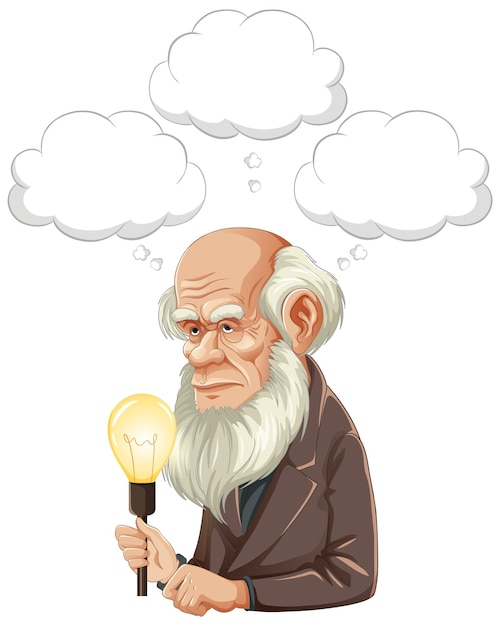Fascinating Facts about Isaac Newton

Isaac Newton was born on January 4, 1643, in Woolsthorpe, Lincolnshire, England.
Newton is widely regarded as one of the greatest scientists of all time.
Newton’s father died three months before his birth, and his mother remarried when he was three.
He is best known for his laws of motion and universal gravitation.
Newton attended the University of Cambridge, where he studied mathematics and natural philosophy.
During the Great Plague of London, Newton returned to his family estate and developed the theories that would later revolutionize science.
One of his groundbreaking works, Mathematical Principles of Natural Philosophy, was published in 1687.
Newton’s three laws of motion form the foundation of classical mechanics.
He developed the concept of a force that holds celestial bodies in their orbits, known as universal gravitation.
Newton invented the reflecting telescope, which allowed for clearer and more accurate observations of celestial objects.
In 1705, Newton was knighted by Queen Anne of England in recognition of his contributions to science.
He served as the president of the Royal Society from 1703 until his death.
Newton had a deep interest in alchemy and spent much of his time studying it.
He wrote extensively on religious and theological matters, often analyzing biblical prophecies.
Newton made significant advancements in the field of optics, publishing his famous work Opticks in 1704.
Fascinating Facts about Isaac Newton part 2
He discovered that white light is composed of a spectrum of colors when passed through a prism.
Newton formulated the theory of color, explaining how different colors are perceived by the human eye.
He was the first to use the term gravity to describe the force pulling objects towards each other.
Newton’s laws of motion helped lay the groundwork for the Industrial Revolution.
He made significant contributions to calculus, although his work was largely overshadowed by that of Gottfried Leibniz.
Newton suffered from depression and mental health issues throughout his life.
He was notoriously secretive and rarely shared his work with others until it was fully developed.
Newton had a bitter rivalry with Robert Hooke, a fellow scientist and member of the Royal Society.
He died on March 31, 1727, at the age of 84, leaving behind a vast legacy of scientific achievements.
Newton’s laws of motion are still taught and applied in physics classrooms around the world.
His discovery of universal gravitation revolutionized our understanding of the cosmos and paved the way for future space exploration.
Newton’s apple tree is legendary, as he is said to have been inspired to formulate his laws of gravity after observing an apple falling from it.
Newton’s laws of motion apply to objects both on Earth and in space, explaining how rockets are able to launch and spacecraft can travel through the universe.
Newton’s genius extended beyond physics and mathematics; he also made significant contributions to the field of chemistry.
Newton’s theories challenged the prevailing scientific beliefs of his time, leading to a profound shift in our understanding of the natural world.
He developed a new branch of mathematics called infinitesimal calculus, which is still widely used today.
Newton’s laws of motion are fundamental to engineering and the design of structures and machinery.
Newton’s discoveries and theories laid the groundwork for future scientific advancements, influencing subsequent generations of scientists.
Newton was elected a Fellow of the Royal Society in 1672, marking the beginning of his involvement in the scientific community.
He held the position of Warden and Master of the Royal Mint from 1696 until his death, where he successfully reformed the currency and reduced counterfeiting.
Newton’s work on optics and the nature of light laid the foundation for modern physics and our understanding of how light behaves.
Newton’s laws of motion can be applied to everyday scenarios, like predicting the trajectory of a sports ball or explaining how cars accelerate and stop.
He had a passion for experimentation and conducted numerous groundbreaking experiments to support his theories.
Newton’s discoveries were not fully appreciated in his lifetime, but his impact on science and philosophy grew significantly in the centuries that followed.
Newton’s work paved the way for the development of classical mechanics, quantifying the motions of objects and explaining their behavior.
He was a meticulous record-keeper and a voracious reader, amassing an extensive library of scientific and philosophical texts.
Newton’s laws of motion can be used to analyze the mechanics of many daily activities, from riding a bike to throwing a ball.
He made significant contributions to the field of mathematics, revolutionizing the way we approach problems and solve equations.
Newton’s laws of motion are consistent with our everyday experiences, providing a practical framework for understanding the physical world.
Newton’s genius continues to inspire scientists and scholars today, reminding us of the power of human curiosity and the possibilities of human discovery.

